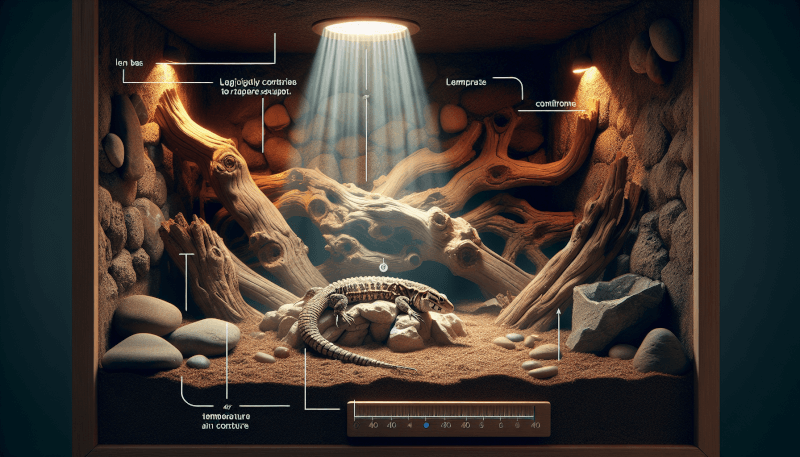Imagine being able to provide your reptile with the ultimate basking spot, a place where they can soak up the warmth and bask in the glow of their own personal paradise. In this article, we will explore the key elements to consider when creating the perfect reptile basking spot. From the right temperature and lighting to the importance of providing different substrate options, we will guide you on a journey to ensure your scaly friend has a haven they can truly call their own. So grab your toolkit and let’s get started on transforming their habitat into a basking oasis that will leave them feeling like a true reptile royalty.
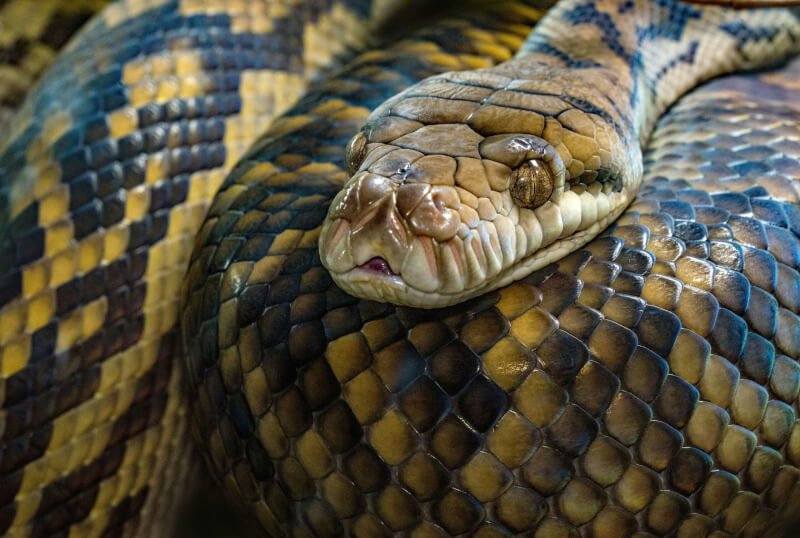
Choosing the Right Bulb
Understanding the Different Types of Bulbs
When it comes to creating the perfect basking spot for your reptile, one of the most important things to consider is the type of bulb you choose. There are several different types of bulbs available, and each one serves a different purpose.
Incandescent bulbs are the most commonly used for basking areas as they provide heat and light. However, they can be quite energy-intensive and have a shorter lifespan compared to other options. Another option is halogen bulbs, which are more energy-efficient and have a longer lifespan. They also emit a bright, white light that can enhance the visual appeal of your reptile’s enclosure.
Another popular choice for basking bulbs is ceramic heat emitters. These bulbs emit heat without producing any visible light, which can be beneficial if you want to create a basking spot without any disruption to your reptile’s day-night cycle. Additionally, ceramic heat emitters are known for their longevity, making them a cost-effective option in the long run.
Considerations for Heat Output
When selecting a bulb for your reptile’s basking spot, it’s crucial to consider the heat output. Different reptile species have specific temperature requirements, so you need to choose a bulb that can provide the right amount of heat.
To determine the appropriate heat output, it’s essential to research the natural habitat requirements of your reptile. Understanding the temperatures they are accustomed can help you replicate those conditions in their enclosure. Some reptiles, like desert-dwelling species, require higher temperatures while others, such as tropical species, need slightly lower temperatures.
By selecting a bulb that produces the correct amount of heat, you can ensure that your reptile is comfortable and able to regulate their body temperature effectively.
Choosing the Correct Wattage
Choosing the correct wattage for your reptile’s basking bulb is equally important. The wattage of the bulb determines the intensity of the heat it produces. As mentioned earlier, different reptile species have different temperature requirements, and the wattage of the bulb should align with those needs.
It’s crucial to strike a balance between providing enough heat for your reptile and preventing overheating. Too high of a wattage can result in excessive heat, leading to discomfort, dehydration, and even burns. Conversely, a wattage that’s too low may not provide enough heat for your reptile to properly thermoregulate.
To determine the appropriate wattage, consult reputable sources, such as breeders, veterinarians, or reptile care guides specific to your reptile species. They can provide valuable insights and recommendations based on their expertise and experience.
Selecting the Appropriate Lamp Fixture
Traditional Clamp Lamp vs. Dome Fixture
Once you’ve chosen the right bulb for your reptile’s basking spot, the next step is to select the appropriate lamp fixture. Two common options are traditional clamp lamps and dome fixtures, each with its advantages and disadvantages.
Traditional clamp lamps are a popular choice due to their versatility and affordability. These lamps typically feature a metal clamp that allows you to attach them to various surfaces, such as the sides or top of the enclosure. They are adjustable, so you can easily position the bulb at the desired height and angle.
On the other hand, dome fixtures are slightly more expensive but offer some unique benefits. These fixtures typically consist of a dome-shaped housing that encloses the bulb. Dome fixtures often come with built-in reflectors, which help maximize the light and heat output from the bulb. Additionally, many dome fixtures are equipped with a built-in dimmer or thermostat, allowing you to control the intensity of the heat.
When choosing between a traditional clamp lamp and a dome fixture, consider factors such as your reptile’s specific needs, the size and layout of the enclosure, and your budget. Both options can effectively create a suitable basking area, so it ultimately comes down to personal preference.
Material and Reflectivity
The material and reflectivity of the lamp fixture play a crucial role in maximizing the efficiency of the heat and light output. The goal is to create a basking spot that provides ample heat and light for your reptile while minimizing energy waste.
Metal lamp fixtures tend to be the most common choice for reptile basking areas. They are durable, easy to clean, and provide excellent heat dispersion. When selecting a metal lamp fixture, opt for one with a reflective interior coating. This reflective coating helps direct the heat and light downward towards the basking spot, rather than dissipating it throughout the enclosure.
Another option to consider is ceramic lamp fixtures. These fixtures are excellent at retaining heat and are less prone to corrosion or damage. However, they may not provide the same level of reflectivity as metal fixtures, so it’s important to choose a ceramic fixture with a reflective interior coating, if possible.
Size and Placement
After selecting the type and material of the lamp fixture, it’s crucial to consider its size and placement within the enclosure. The size of the fixture should match the size of the bulb, ensuring a secure and stable fit. A loose or oversized fixture may pose a safety hazard for your reptile, as it could potentially fall or cause burns.
As for placement, it’s essential to position the lamp fixture in a way that creates a proper basking zone for your reptile. Depending on the enclosure’s size and layout, you may need to experiment with different placements to achieve the desired temperature gradient. Ideally, the basking spot should be large enough for your reptile to comfortably rest on and receive adequate heat.
Consider factors such as distance from the basking spot to the bulb, height of the fixture, and any potential obstructions that may interfere with the heat and light distribution. Observing your reptile’s behavior and adjusting the placement accordingly can help ensure they have the ideal basking area within their enclosure.
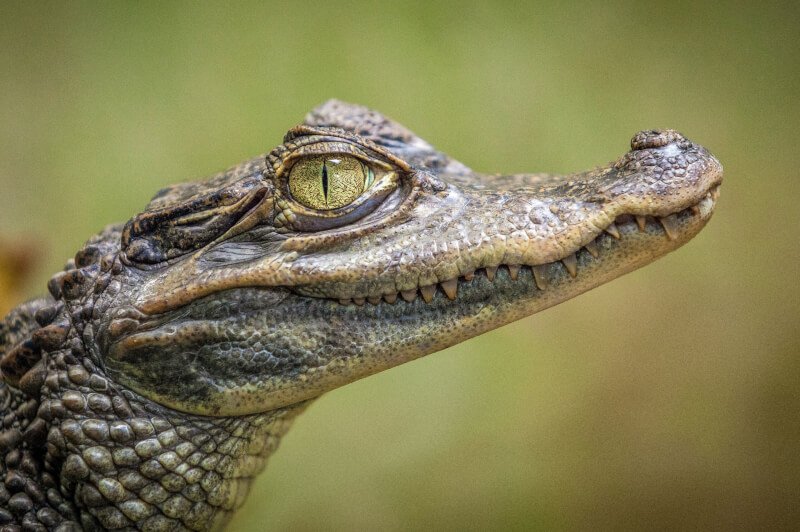
Determining the Optimal Temperature Range
Researching Natural Habitat Requirements
One of the critical factors in creating the perfect basking spot is understanding the optimal temperature range for your reptile species. To accomplish this, it’s vital to research the natural habitat requirements of your reptile.
Different reptiles come from diverse geographical regions, ranging from arid deserts to tropical rainforests. Each habitat has its unique temperature range that reptiles have adapted to over time. By replicating these conditions within their enclosure, you can help ensure your reptile’s health and well-being.
Take the time to gather information about the average daytime and nighttime temperatures in your reptile’s natural habitat. This will provide a baseline for creating an appropriate temperature gradient within their enclosure. While the basking spot should provide a warm and comfortable area, other areas of the enclosure should mimic the cooler regions of their natural habitat.
Considering the Species-Specific Needs
In addition to understanding the general temperature range for your reptile’s natural habitat, it’s equally crucial to consider species-specific needs. Different reptile species have varying temperature requirements, even within the same geographical region.
Some reptiles, such as bearded dragons, require a basking spot with temperatures ranging from 95°F to 105°F (35°C to 40°C). Others, like leopard geckos, thrive at slightly lower temperatures, with a basking spot ranging from 88°F to 92°F (31°C to 33°C). It’s important to gather accurate and reliable information about your specific reptile species to ensure you’re providing the right conditions.
Consult reputable sources, such as experienced reptile keepers, reputable breeders, or care guides specific to your reptile species. They can provide valuable insights and help you tailor the basking spot to meet your reptile’s unique needs.
Thermoregulation and Temperature Gradient
Creating a proper temperature gradient within the enclosure is essential for your reptile’s thermoregulation. Reptiles are ectotherms, meaning they rely on external sources of heat to regulate their body temperature. By providing a range of temperature zones within the enclosure, your reptile can move between warm and cool areas as needed.
The basking spot serves as the warmest area within the enclosure, mimicking the heat of the sun in their natural habitat. As you move further away from the basking spot, the temperature should gradually decrease to simulate the cooler regions.
To achieve this temperature gradient, position the basking bulb at one end of the enclosure and use lower-wattage bulbs or heat sources at the opposite end. This setup allows your reptile to choose the temperature that suits their needs at any given time.
Monitor the temperatures consistently using thermometers, ensuring they are within the optimal range for your reptile species. The ability to thermoregulate effectively will significantly contribute to your reptile’s overall health and behavior.
Understanding UVB Lighting
Importance of UVB for Reptiles
UVB lighting is crucial for reptiles as it plays a vital role in their health and well-being. In their natural habitats, reptiles are exposed to UVB radiation from the sun, which enables them to synthesize vitamin D3. Vitamin D3 is essential for calcium metabolism, ensuring proper bone growth and development.
Without adequate UVB exposure, reptiles may develop various health issues, such as metabolic bone disease, weakened immune systems, and reproductive disorders. Therefore, providing UVB lighting in their enclosure is vital for their overall health.
UV Index and Exposure Time
When it comes to UVB lighting, it’s important to understand the concept of the UV Index and exposure time. The UV Index measures the intensity of UVB radiation, which can vary depending on the time of day, season, and geographical location.
Different reptile species have varying UVB requirements, so it’s essential to research the specific needs of your reptile. They may require a specific UV Index range for optimal health. Additionally, the exposure time to UVB lighting should also be considered. Reptiles need enough exposure to synthesize vitamin D3, but not too much to avoid overexposure or UVB burn.
Consult reputable sources, such as reptile care guides or veterinarians knowledgeable in reptile health, for accurate information on the UVB requirements and exposure duration for your specific reptile species.
UVB Bulb Maintenance
Proper maintenance of UVB bulbs is crucial to ensure their effectiveness in providing the necessary UVB radiation for your reptile. UVB bulbs degrade over time, even if the visible light output remains the same. It’s recommended to replace UVB bulbs every 6 to 12 months, depending on the manufacturer’s instructions.
To ensure the UVB bulbs are functioning as intended, use a UV meter or a reptile-specific UVB meter to measure the UVB output. This can help confirm that your reptile is receiving adequate UVB radiation for their health and well-being.
Additionally, regularly clean the UVB bulbs by gently wiping them with a soft, dry cloth. Dust and debris can accumulate on the surface of the bulb, reducing its effectiveness. Keeping the bulbs clean can help maintain their UVB output and ensure your reptile receives the proper lighting they need.
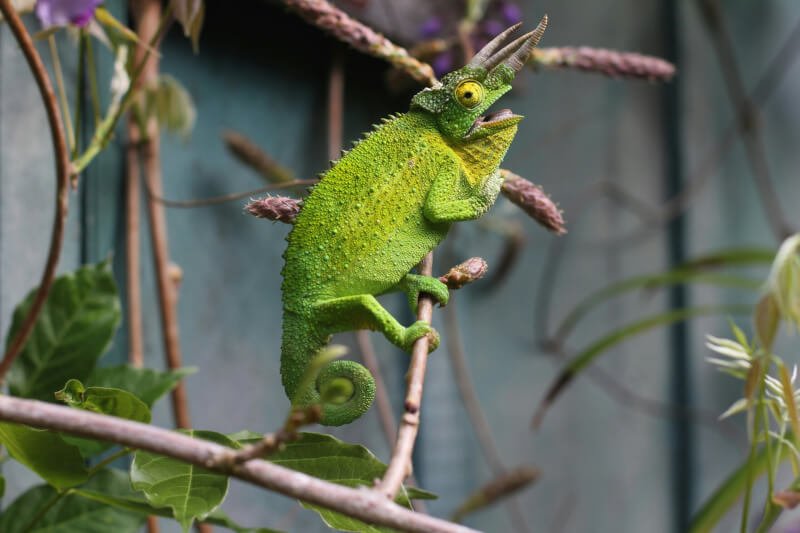
Creating a Safe and Comfortable Basking Area
Choosing the Right Substrate
Selecting the right substrate for your reptile’s basking area is crucial for their safety and comfort. The substrate should be heat-resistant, easy to clean, and provide a secure surface for your reptile to rest on.
Avoid using substrates that retain moisture, such as moss or certain types of wood chips. These can become damp and increase the risk of bacterial or fungal growth. Instead, opt for non-porous substrates like reptile carpet, ceramic tile, or slate. These materials are easy to clean and do not retain heat or moisture, ensuring a safe and comfortable basking area for your reptile.
Providing Secure Platforms
In addition to the substrate, it’s important to provide secure platforms for your reptile to bask on. Reptiles like to have elevated areas to perch on while they bask, giving them a sense of security and control over their environment.
Ensure the platforms are sturdy, especially if you have larger reptiles that may put more weight on them. Avoid using materials that can be easily chewed or damaged, such as untreated wood or plastic. Opt for natural rocks or pre-made platforms specifically designed for reptiles, as these provide a stable and secure surface for your reptile to rest on.
Additionally, consider the size of the platform. It should be large enough to accommodate your reptile comfortably, allowing them to stretch out and soak up the warmth from the basking spot.
Preventing Overheating or Burns
Maintaining the correct temperature in the basking area is crucial to prevent overheating or burns. Reptiles rely on their basking spot for warmth, but excessive heat can be harmful to their health.
Monitor the temperature regularly using a thermometer to ensure it remains within the optimal range for your reptile species. If you notice the temperature is consistently too high, consider adjusting the wattage of the bulb or repositioning the lamp fixture to create a cooler basking spot.
To minimize the risk of burns, ensure there is enough distance between the reptile and the heat source. Position the lamp fixture at an appropriate height to allow your reptile to bask without coming into direct contact with the bulb or heat emitter. This will prevent accidental burns and ensure your reptile’s safety and comfort.
Enhancing Environmental Enrichment
Adding Natural Elements and Hides
To create a stimulating and enriching environment for your reptile, consider adding natural elements and hides to their enclosure. This can help replicate their natural habitat and provide them with opportunities for exploration and mental stimulation.
Introduce live or artificial plants, branches, and rocks to create a more naturalistic environment. These additions not only enhance the visual appeal of the enclosure but also provide hiding spots and climbing opportunities for your reptile.
Hides are essential for reptiles, as they provide a sense of security and a place to retreat to when they feel stressed or threatened. Place hides at various locations within the enclosure, both in the basking area and cooler regions, to ensure your reptile feels safe and has options for self-regulating their temperature.
Simulating Day-Night Cycles
Reptiles, like most animals, have natural circadian rhythms that are influenced by the patterns of daylight and darkness. Replicating these day-night cycles within their enclosure can promote their overall well-being and mental health.
Use timers to control the lighting in the enclosure, ensuring a consistent cycle of light and darkness. Aim for 10 to 12 hours of light and 12 to 14 hours of darkness, mimicking the natural daylight patterns in their native habitat.
Having a regular day-night cycle can help regulate your reptile’s behavior, sleep patterns, and overall activity levels. It also allows for adequate rest periods, which are essential for their overall health and vitality.
Introducing Climbing Structures
Many reptiles are natural climbers and benefit from having climbing structures within their enclosure. These structures provide opportunities to exercise, explore, and engage in natural behaviors such as basking in elevated areas.
Consider adding branches or reptile-specific climbing structures to create vertical space within the enclosure. Ensure the branches or structures are secure and sturdy, as reptiles may put significant weight on them during climbing or basking.
Having climbing structures not only promotes physical exercise but also encourages natural behaviors and mental stimulation. It allows your reptile to utilize their natural instincts and helps create a more engaging and enriching environment.

Monitoring and Adjusting Temperature
Using Thermometers and Hygrometers
To ensure your reptile’s basking area remains at the optimal temperature, it’s critical to monitor the temperature regularly. Thermometers and hygrometers are essential tools for accurately assessing the temperature and humidity levels within the enclosure.
Place thermometers in different areas of the enclosure, including the basking area and cooler regions. This will give you a comprehensive understanding of the temperature gradient and help identify any potential temperature inconsistencies.
Hygrometers measure the humidity levels within the enclosure, which is especially important for reptiles with specific humidity requirements. By monitoring the humidity levels, you can make adjustments to ensure they fall within the appropriate range for your reptile species.
Regularly checking and recording the temperature and humidity readings can help you identify any deviations from the optimal range. This allows you to make necessary adjustments and ensure your reptile’s basking area provides the ideal conditions for their health and well-being.
Regularly Examine Basking Behavior
Observing your reptile’s basking behavior is another valuable way to assess the temperature of their basking area. Reptiles instinctively seek out warmer areas to regulate their body temperature, so their behavior can provide insights into the effectiveness of the basking spot.
Pay attention to how long your reptile spends in the basking area and whether they exhibit signs of discomfort or stress. Excessive basking or avoiding the spot altogether may indicate that the temperature is not suitable for your reptile.
Be aware of any abnormal behaviors, such as constant pacing, restlessness, or signs of overheating. These could be indications that the basking area is too hot or that other environmental factors need adjustment.
Regularly observing your reptile’s behavior and assessing their comfort in the basking area allows you to make timely changes and ensure their basking spot provides the ideal conditions for their health and well-being.
Making Necessary Temperature Adjustments
Based on the information gathered from thermometers, hygrometers, and your reptile’s behavior, you may need to make adjustments to the temperature in the basking area.
If the basking spot consistently falls outside of the optimal temperature range, consider adjusting the wattage of the bulb, changing the height of the lamp fixture, or repositioning the heat emitter. These modifications can help fine-tune the heat output and create a more suitable basking area for your reptile.
Experiment with different adjustments and monitor the temperature closely to ensure you achieve the desired temperature range. Remember to make gradual changes, allowing your reptile time to adjust to any alterations in their environment.
A well-maintained and properly adjusted basking area will promote your reptile’s overall health, behavior, and ensure they have a comfortable and safe environment.
Maintaining Proper Humidity Levels
Understanding Reptile Humidity Requirements
Humidity plays a vital role in the health and well-being of reptiles. Different reptile species have varying humidity requirements, so it’s important to understand and replicate the specific needs of your reptile.
Some reptiles, such as tropical species, require higher humidity levels to maintain proper hydration and shed their skin effectively. Others, like desert-dwelling species, need lower humidity levels to avoid respiratory issues and prevent excessive moisture in their enclosure.
Research the natural habitat of your reptile species and determine the appropriate humidity range necessary for their health. This information will guide you in creating the ideal humidity levels within their enclosure.
Providing Frequent Mistings
One way to maintain adequate humidity levels within the enclosure is through frequent mistings. Using a reptile-specific misting bottle, spray water directly into the enclosure to create moisture in the air.
The frequency and duration of mistings will depend on your reptile’s specific humidity requirements. For reptiles requiring higher humidity, misting multiple times a day may be necessary. Conversely, reptiles with lower humidity requirements may only need occasional mistings.
Monitor the humidity consistently using a hygrometer to ensure it stays within the optimal range. Adjust the frequency and duration of mistings accordingly to maintain the appropriate humidity levels for your reptile’s health and well-being.
Using Humidifiers or Terrarium Foggers
For reptiles with higher humidity requirements or for larger enclosures, using humidifiers or terrarium foggers can be an effective solution. These devices help create and maintain the desired humidity level within the enclosure, providing a more controlled environment for your reptile.
Humidifiers release a fine mist of water vapor into the air, increasing the overall humidity. They come in various sizes, allowing you to choose one that suits the size of your reptile’s enclosure. Ensure that the humidifier allows for adjustable humidity settings, so you can fine-tune the humidity level based on your reptile’s specific needs.
Terrarium foggers work similarly to humidifiers but produce a dense fog that can create a more visually appealing effect within the enclosure. Like humidifiers, they should have adjustable settings to maintain the optimal humidity for your reptile.
Before using humidifiers or terrarium foggers, consult reputable sources and ensure they are compatible with your reptile’s species and enclosure requirements. Proper placement and regular monitoring of humidity levels are crucial to prevent excessive moisture buildup and maintain a healthy and comfortable environment for your reptile.
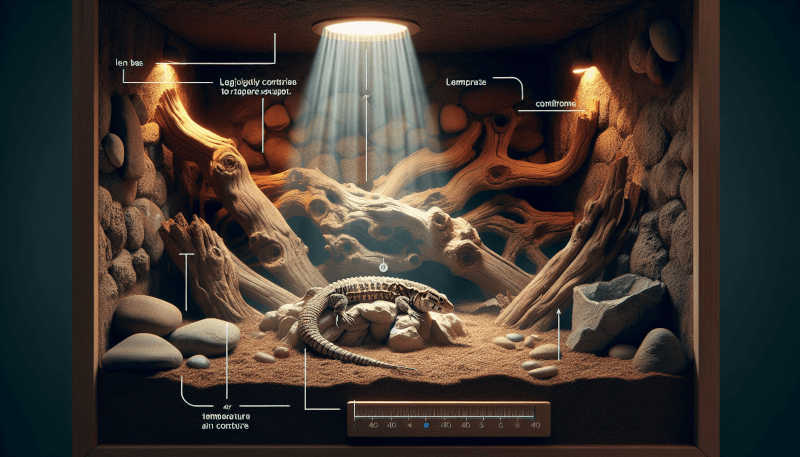
Regular Cleaning and Hygiene Practices
Removing Waste and Contaminated Substrates
Maintaining a clean and hygienic enclosure is paramount to your reptile’s health and well-being. Regularly remove waste and soiled substrate to prevent the buildup of harmful bacteria or fungi.
Spot clean the enclosure daily, removing any feces, urates, or uneaten food. This helps maintain a clean and odor-free environment, minimizing the risk of infections or parasites.
Deep clean the enclosure on a regular schedule, replacing the substrate entirely. The exact frequency will depend on your reptile’s size and habits. Remove any contaminated or soiled substrate and thoroughly clean the enclosure using reptile-safe disinfectants. Rinse and dry the enclosure completely before adding new substrate.
By practicing proper waste management and hygiene, you reduce the risk of bacterial or fungal growth, helping to ensure a clean and healthy basking spot for your reptile.
Sanitizing Basking Areas
In addition to regular cleaning of the enclosure, it’s important to sanitize the basking areas periodically. Basking spots can accumulate dirt, debris, and microorganisms, potentially leading to health issues if not properly addressed.
Gently wipe down the basking areas using a reptile-safe disinfectant, ensuring you remove any visible dirt or bacteria. Pay attention to any crevices or hard-to-reach areas where bacteria or fungi may hide. Rinse with water and dry thoroughly before allowing your reptile access to the basking spot again.
Sanitizing the basking areas at regular intervals helps maintain a clean and hygienic environment for your reptile. It reduces the risk of infections or diseases, ensuring your reptile’s safety and well-being.
Preventing Bacterial or Fungal Growth
To prevent bacterial or fungal growth in the enclosure, it’s important to maintain proper ventilation and moisture control. Excessive humidity or stagnant air can create a favorable environment for these microorganisms to thrive.
Ensure there is adequate airflow within the enclosure, using ventilation systems or fans if necessary. This helps prevent the buildup of excessive moisture and promotes a healthier environment for your reptile.
Monitor the humidity levels consistently using a hygrometer and adjust misting or humidification practices as needed. Avoid over-misting, as this can create damp conditions that encourage bacterial or fungal growth. Proper humidity control will significantly minimize the risk of these unwanted microorganisms.
By implementing good cleaning and hygiene practices, you provide your reptile with a safe and healthy basking spot that promotes their overall well-being and long-term health.
Seeking Professional Advice and Guidance
Consulting with Reptile Veterinarians
When it comes to creating the perfect basking spot for your reptile, seeking professional advice and guidance is invaluable. Reptile veterinarians are knowledgeable in reptile health and can provide you with expert advice specific to your reptile species.
Schedule regular check-ups with a reptile veterinarian who can assess your reptile’s overall health, including the conditions of their basking area. They can provide recommendations tailored to your reptile’s specific needs and address any concerns or issues you may have.
In addition to regular check-ups, consult a reptile veterinarian promptly if you notice any abnormal behavior, changes in appetite, or signs of illness. They can diagnose and treat any health problems that may affect your reptile’s ability to utilize their basking area effectively.
Joining Reptile Enthusiast Communities
Joining reptile enthusiast communities is another excellent way to gain knowledge and insights into creating the perfect basking spot. These communities consist of passionate reptile owners and enthusiasts who are eager to share their experiences and expertise.
Online forums, social media groups, and reptile-specific websites are great platforms to connect with fellow reptile keepers. Ask questions, seek advice, and learn from their first-hand experiences. Reptile enthusiast communities are often welcoming and supportive, making them valuable resources for reliable information and camaraderie.
Engaging with these communities allows you to stay updated on the latest advancements in reptile care and basking area setups. You may discover innovative techniques or equipment that can enhance your reptile’s basking experience.
Attending Reptile Expos and Workshops
Reptile expos and workshops provide an opportunity to interact with reptile experts, breeders, and vendors in person. These events often feature educational seminars and exhibits that showcase the latest products and practices in reptile care.
Attending reptile expos and workshops allows you to learn from industry professionals and gain invaluable insights into creating the perfect basking spot. You can see firsthand the various equipment, lighting options, and enclosure setups available in the market. Interacting with experts and vendors gives you a chance to ask specific questions and get tailored recommendations for your reptile’s unique needs.
These events also provide an excellent networking platform, allowing you to connect with other reptile enthusiasts and expand your knowledge and support network.
In summary, creating the perfect basking spot for your reptile involves choosing the right bulb, selecting an appropriate lamp fixture, determining the optimal temperature range, understanding UVB lighting, providing a safe and comfortable basking area, enhancing environmental enrichment, monitoring and adjusting temperature and humidity levels, maintaining proper hygiene practices, and seeking professional advice and guidance. By following these guidelines and continuously monitoring your reptile’s needs, you can ensure they have a basking spot that promotes their health, happiness, and overall well-being.

